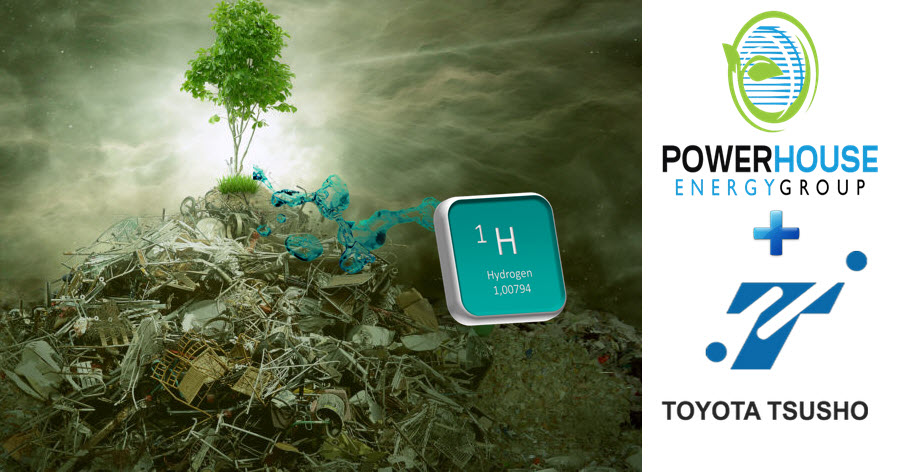The Powerhouse Beneath: Exploring the Battery of the 2025 Toyota 4Runner
Related Articles: The Powerhouse Beneath: Exploring the Battery of the 2025 Toyota 4Runner
Introduction
With great pleasure, we will explore the intriguing topic related to The Powerhouse Beneath: Exploring the Battery of the 2025 Toyota 4Runner. Let’s weave interesting information and offer fresh perspectives to the readers.
Table of Content
The Powerhouse Beneath: Exploring the Battery of the 2025 Toyota 4Runner

The 2025 Toyota 4Runner, known for its rugged off-road capabilities and enduring legacy, relies on a robust battery to power its various systems and bring its adventurous spirit to life. While the specific details of the battery are yet to be officially released, analyzing existing trends and the 4Runner’s history provides valuable insight into what we can expect from this critical component.
Understanding the Battery’s Role
The battery in any vehicle serves as the heart of the electrical system. It provides the initial power needed to start the engine, supplying the spark for combustion. Once the engine is running, the alternator takes over, charging the battery and powering the vehicle’s electrical components. These include:
- Engine Management System: The battery fuels the electronic control unit (ECU) that manages various engine functions like fuel injection, ignition timing, and emissions control.
- Lighting: Headlights, taillights, interior lights, and other lighting systems rely on the battery for power.
- Accessories: Power windows, door locks, power steering, audio systems, and other creature comforts are powered by the battery.
- Safety Features: Anti-lock brakes (ABS), electronic stability control (ESC), and airbags all require battery power to function effectively.
Anticipating the 2025 4Runner Battery
While Toyota has not yet unveiled the specifics of the 2025 4Runner’s battery, we can draw inferences from its previous models and the evolving automotive landscape.
1. Continued Reliance on Conventional Batteries: Given the 4Runner’s focus on off-road capability and its traditional design, it is highly likely that the 2025 model will continue to utilize a conventional lead-acid battery. These batteries are robust, reliable, and readily available, making them ideal for demanding environments.
2. Potential for Enhanced Performance: Toyota is known for its continuous pursuit of improvement. The 2025 4Runner might feature a lead-acid battery with enhanced performance characteristics. This could involve:
- Increased Cold Cranking Amps (CCA): Higher CCA allows the battery to deliver more power in cold temperatures, ensuring reliable starts even in harsh conditions.
- Extended Life Cycle: Advancements in battery technology could lead to a longer lifespan, reducing the frequency of battery replacements.
- Improved Reserve Capacity: A higher reserve capacity indicates the battery’s ability to power accessories for an extended period even when the engine is off.
3. Hybrid Considerations: While unlikely for the standard 4Runner, a hybrid variant could incorporate a more advanced battery technology. This could include a lithium-ion battery, offering higher energy density and faster charging times. However, the added weight and complexity of a hybrid system might compromise the 4Runner’s off-road prowess.
The Importance of Battery Maintenance
Regardless of the specific battery technology, proper maintenance is crucial for optimal performance and longevity. Here are some essential steps:
- Regular Inspection: Visually inspect the battery terminals for corrosion and ensure they are securely connected.
- Terminal Cleaning: Clean any corrosion buildup with a baking soda solution and a wire brush.
- Charging: Maintain a consistent charging level by ensuring the alternator is functioning correctly and by using a battery charger if necessary.
- Water Level Check (for Lead-Acid Batteries): For traditional lead-acid batteries, check the water level regularly and top off with distilled water if needed.
FAQs Regarding the 2025 4Runner Battery
Q: What is the expected lifespan of the 2025 4Runner battery?
A: The lifespan of a lead-acid battery typically ranges from 3 to 5 years, but this can vary depending on usage, climate, and maintenance. Advancements in battery technology could extend this lifespan.
Q: Can I replace the 2025 4Runner battery myself?
A: While replacing a battery is a relatively straightforward task, it’s essential to ensure proper disposal of the old battery and to choose a compatible replacement. Consult your owner’s manual or a qualified mechanic for guidance.
Q: What are the signs of a failing battery?
A: Common signs include slow engine cranking, dimming lights, difficulty starting the vehicle, and frequent electrical problems.
Q: How do I know if my 2025 4Runner battery needs a replacement?
A: A battery tester can provide a reliable assessment of the battery’s health. A mechanic can also conduct a comprehensive inspection.
Tips for Battery Care
- Avoid Deep Discharges: Frequent deep discharges can shorten the battery’s lifespan.
- Minimize Accessory Usage: Reduce the use of power-consuming accessories when the engine is off to conserve battery power.
- Regularly Check the Battery: Make battery checks a part of your routine vehicle maintenance.
Conclusion
The battery is a vital component of the 2025 Toyota 4Runner, powering its various systems and enabling its off-road adventures. While the specific details of the battery are yet to be revealed, we can expect it to be a robust and reliable component, likely a conventional lead-acid battery with potential advancements for improved performance and longevity. By understanding the battery’s role, practicing proper maintenance, and being aware of potential issues, 4Runner owners can ensure their vehicle’s electrical system remains in optimal condition, allowing them to confidently navigate any terrain.








Closure
Thus, we hope this article has provided valuable insights into The Powerhouse Beneath: Exploring the Battery of the 2025 Toyota 4Runner. We hope you find this article informative and beneficial. See you in our next article!
